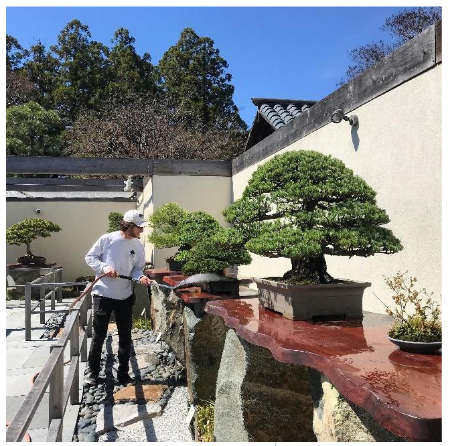The buzzing of bees and the sweet scent of flowers fill the air at the Museum as the spring weather continues to bring us warm sunny days and refreshing rains. The buds on the trees are beginning to break and fresh tender leaves fill out what was a beautiful winter silhouette. Spring is an exciting time of year for everyone who enjoys the outdoors, although hardly anyone looks forward to this season more than a bonsai enthusiast.
After a long, cold winter of contemplating our many bonsai endeavors – like re-styling, keeping trees healthy and implementing new horticultural techniques – the bonsai enthusiast is eager for the last frost and the abundance of work ahead. Now that repotting season has started to wind down there are many tasks ahead.
Here at the National Bonsai and Penjing Museum we have been bringing trees out of their winter protection and filling up our pavilions for the enjoyment of our visitors. This task is strenuous, but very rewarding, as the various areas of the Museum are revitalized.
With the wonderful spring weather and new growth rapidly expanding, bonsai caretakers must carefully execute the task of watering. Fertilizing is also very important; one must start out with a humic acid and fish emulsion when the trees show signs of awakening from dormancy, then inorganic fertilizers can be used alternating with organic fertilizer.
These actions are both crucial to maintain the bonsais’ health and ensure exponential growth during the spring and the rest of the growing season.
Another very important spring task is managing the growth distribution of deciduous trees. As the new shoots expand outside of the silhouette of the intended design, they must be cut back to maintain the shape of the tree. However, one should avoid cutting back too much of the new growth, as that will drastically slow the tree’s future maturation. Instead, cutting the outer shoots and leaving interior branches to grow stronger will increase the strength within the foliage pad. This step is crucial when attempting to maintain the health of the interior branches and creating the smallest tree possible.
As we move further into the spring season, make sure to keep up with work on your bonsai and your trees will continue to develop in the right direction. Although bonsai tasks might seem daunting and time-consuming this time of year, don’t forget to get outside enjoy the rest of the beauty that spring brings with your friends and families!
Andy Bello has been selected as the Museum’s 2019 First Curator’s Apprentice. The National Bonsai & Penjing Museum's First Curator's Apprenticeship for 2019 is funded by generous grants to the National Bonsai Foundation from Toyota North America and The Hill Foundation. More on Andy here.





